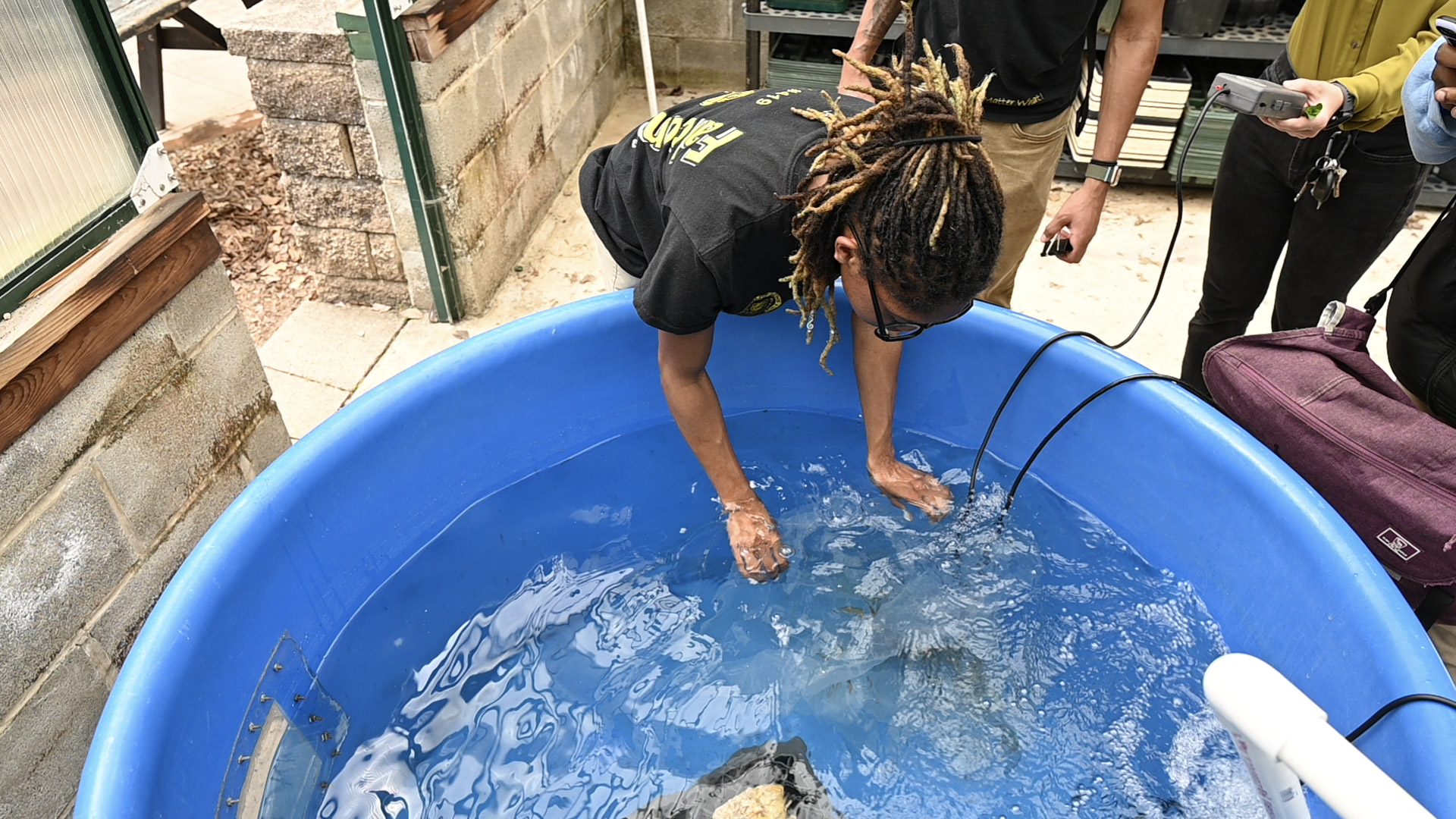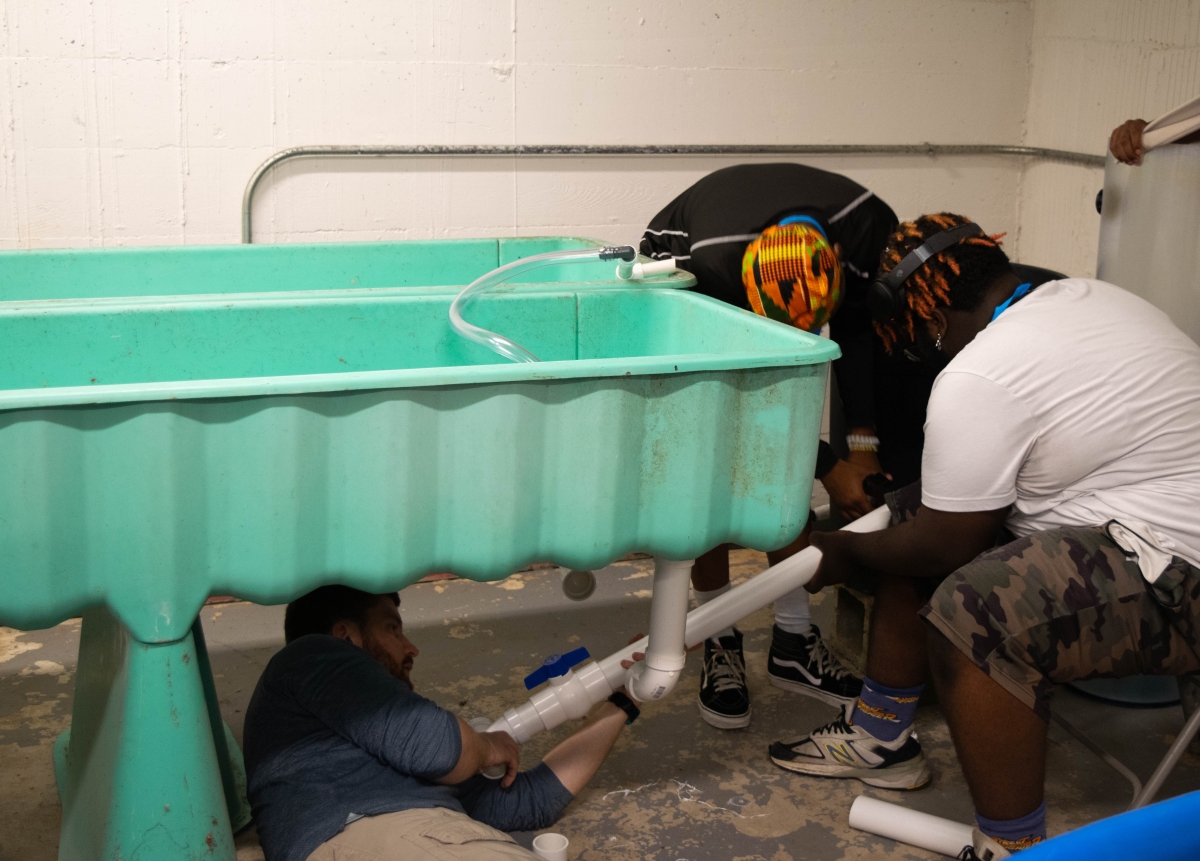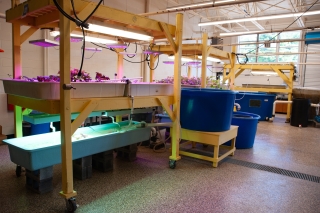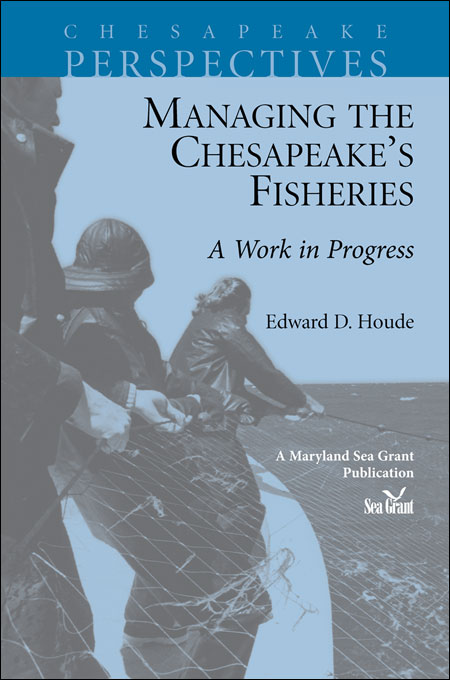Knauss legislative fellowships in Congress help build careers — and they're fun and educational. See our video and fact sheet for details.
Beyond Fish: Aquaculture in Action Provides Students with Hands-on Science Education
Before Vince O’Neal began rearing fish as a high school participant in Aquaculture in Action, he and his classmates had never even heard of aquaculture.
“If you had fish, it was a goldfish at home, not tilapia,” O’Neal, now working as a farm manager at Green Street Academy in Baltimore, said. “It was a new experience for us. The filters and parts—a lot of it was intricate, complex things. The water filters through the big filter, then goes to the fish tank, and then it keeps circulating out, so the water gets reused.”
Unlike a goldfish bowl at home, the fish tanks at the Aquaculture in Action program include custom-designed computer programs and monitoring probes to record the tank’s temperature, pH, oxygen levels, and more. Through Aquaculture in Action, a program run by Maryland Sea Grant, high school students raise fish and learn about aquaculture as part of their science classes. Maryland Sea Grant provides teachers across the state with live fish in collaboration with the Maryland Department of Natural Resources, as well as tanks, filtration devices, and monitoring system for logging water quality and fish measurement data. The concept is the same from school to school—give students hands-on experience with aquaculture—but the ways these individualized systems can be incorporated into different classrooms is nearly limitless.
At Green Street Academy, one of 20 schools participating in Aquaculture in Action, students raise fish as part of the school’s agriculture program. These students, who tend to the school’s garden and chickens, learn about fish farming while working with tanks of tilapia and yellow perch in the school’s basement. The school has even partnered with a restaurant, which offered the fish on their menu at the end of the school year.
Fish rearing is the foundation of Aquaculture in Action programming, but the aquaculture systems provide students hands-on experience with dozens of related topics, from plumbing and water chemistry to behavioral sciences and entrepreneurship. Students interested in computers can work with the microcomputing system that logs water quality data like temperature, pH, and oxygen levels in the fish tanks.
“Not every kid wants to pick up a fish or even be in a room that smells like fish water,” Eric Oberlechner, a teacher at Green Street Academy, said. “Some kids are really, really into fish stuff because they’ve got home aquariums, and they've been exposed to it before. But there are all these different aspects that go into the farm. You don't have to be the person that comes down and feeds the fish or cleans the filter. You can be the person that works with the restaurant lady or tracks the data to find the median growth rate of the fish, if you’re into the math and computer spreadsheets.”

Even though some participants like O’Neal can be hesitant to roll up their sleeves and deal with the fish directly, O’Neal still recalls watching his classmates separate the male and female fish and manually fertilize the fish eggs.
“To me, that was cool. I didn't know you could do that. I thought all that stuff had to be just natural, and you just had to let nature take its course, but once they did that, I realized, 'Oh, this is a lot more than I thought it was,’” O’Neal recalled.
Other schools, including seven high schools and some middle schools in Carroll County Public Schools, have incorporated Aquaculture in Action tanks into their Science Research course, where students learn about the scientific method and design their own aquaculture research questions. In these hands-on courses, students complete a research project over the course of the year.
“Once the kids learn the basics of aquaculture, there are so many avenues they can take when they want to do their own research projects,” said Don Adams, who teaches science research at Westminster High School in Carroll County. “I've had kids do their project on octopus, starfish, clownfish, two different kinds of seahorses. We got pretty good at getting them to reproduce. That's all based on the basic aquaculture principles of water quality and habitat.”
One Carroll County Public Schools student interested in psychology based his project around fish behavior at feeding times. Other research questions have centered around fish growth, feeding rates, and different aspects of water quality.
When most high school students first see the recirculating systems used for raising fish in the Aquaculture in Action program, one of their first questions is about the filtration system—a tank of bubbling, bacteria-laden plastic beads that cleans the water and eliminates ammonia before the water re-enters the fish tank. Andrew Gibson, a science teacher at Century High School in Carroll County, uses students’ curiosity as a hook to introduce them to the nitrogen cycle, microbiology, and water chemistry.
Most of the students who participate in the Aquaculture in Action program don’t go on to be fish biologists, but understanding aquaculture can help them make informed food choices about the fish they eat, given that about half of seafood eaten in the United States is farm-raised. Since the Aquaculture in Action program began nearly three decades ago, thousands of students have learned valuable lessons about fish farming and STEM principles.
“This era of students, they spend so much time with simulations, virtual explorations, virtual labs, watching videos of other people doing things,” Gibson said. “A recirculating aquaculture system is a perfect way to learn about so many different facets of existence. Even the kid that doesn't like science is enjoying animal husbandry and learning about the fish. It's so hands-on, so involved, and different from everything else they're doing.”

Top image: The aquaculture area at South Carroll High School. Photo: Nicole Lehming, MDSG
See all posts from the On the Bay blog







